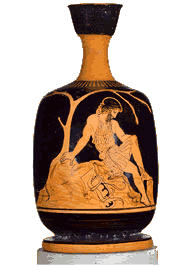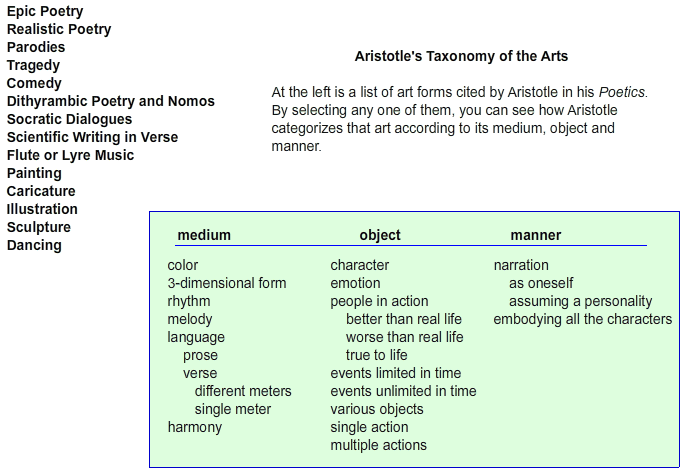
 |
|

Categorizing works of art by the objects they represent proved sufficient up until the end of the nineteenth century. In painting, for example, a landscape painting is clearly different from a still life or a portrait. What Aristotle did not foresee was the popularization of abstract art forms that are non-objective. True to form, the arts in the twentieth century contrived to step around the boundaries that had traditionally defined them. It should be added that while Aristotle's taxonomy of the arts does not include non-objective arts, his contention that aesthetic satisfaction lies in the relationship of the parts of a work of art to each other and to the whole does accommodate abstraction.
Placing the distinction of people appearing "better than real life" or "worse than real life" under the classification of the object is also questionable. Certainly, one can create a portrait or a caricature of the same person, making them appear dignified in one and laughable in the other. In the same manner, ancient Greek tragedies using the same Homeric myths represented their characters in entirely different lights. The Electra of Euripides' Electra and the Electra of his Orestes are obviously quite different from each other while the mythological characters that Euripides was using as his model are one and the same.

In keeping with his taxonomy of the arts, Aristotle groups the six parts of a tragedy according to the medium, object and manner of imitation.
| medium | verbal expression song-compoition |
| object | plot charcter thought |
| manner | staging |
